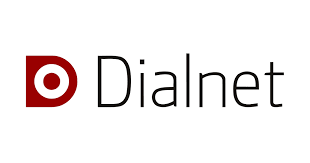Effect of consumption of honey on glycemia in normal and hyperglycemic mice due to alloxane
DOI:
https://doi.org/10.32480/rscp.2021.26.1.91Keywords:
swiss albino mouse, honey, alloxane, hyperglycemiaAbstract
Diabetes Mellitus is a chronic pathology of metabolic origin, which appears due to the fact that the pancreas does not produce the amount of insulin that the human body needs, or of a lower quality. In this work we tried to define the effect of the consumption of honey on the glycemia in healthy and hyperglycemic male mice induced to diabetes by alloxane. For this, four groups of six male Swiss albino mice each were used. normoglycemic with regular diet treated with water; normoglycemic with diet + honey; hyperglycemic with regular diet treated with water and finally, hyperglycemic with alloxane with diet + honey. The treatment lasted for three days. The results indicated that the hypeglycemic animals that received honey for three days showed a favorable glycemic profile, since a significant decrease in sugar level was observed in this group after 2 and 4 hours of consumption of honey. The addition of honey in the group of hyperglycemic animals with a controlled diet contributes to achieving significantly lower glycaemia than in the group of hyperglycemic animals that do not receive honey.
Metrics
Downloads
References
2. Maham L, Escott-Stump S. Nutrición y dietoterapia de Krause. Mc Graw Hill Interamericana. México; 2001.
3. Pipicelli G, Tatti P. Therapeutic properties of honey. Health. 2009;1(2):281-283.
4. Jimenez JT, Palacios M, Cañete F, Barriocanal LA, Medina U, Figueredo R, Alberti KG. Prevalence of diabetes mellitus and associated cardiovascular risk factors in an adult urban population in Paraguay. Diabetic Medicine. 1998;15(4):334-338.
5. Moore MC, Davis SN, Mann SL, Cherrington AD. (2001). Acute fructose administration improves oral glucose tolerance in adults with type 2 diabetes. Diabetes Care. 2001;24(11):1882-1887.
6. Rodríguez HGR, Méndez JD. (1994). Diabetes mellitus experimental. Ciencia Veterinaria, México. 1994;6:347-377.
7. Gil A. Tratado de nutrición. Médica Panamericana. Madrid; 2010;2:232-236.
8. Tomita T. A dynamic role of liver glycogen in alloxan diabetic rats. Endocrinologia japónica. 1973;20(8):243-247.
9. Zúñiga JM, Orellana JM, Tur JA. Ciencia y tecnología del animal de laboratorio. Universidad de Alcalá de Henares y. SECAL, Madrid; 2011; 160p.
10. Akhtar MS, Khan MS. (1989). Glycaemic responses to three different honeys given to normal and alloxan-diabetic rabbits. J Pak Med Assoc. 1989;39(4):107-13.
11. Cortés ME, Vigil P, Montenegro G. The medicinal value of honey: a review on its benefits to human health, with a special focus on its effects on glycemic regulation. Ciencia e Investigación Agraria. 2011;38(2):303-317.
12. Al-Waili NS. Natural honey lowers plasma glucose, C-reactive protein, homocysteine, and blood lipids in healthy, diabetic, and hyperlipidemic subjects: comparison with dextrose and sucrose. Journal of Medicinal Food. 2004;7(1):100-107.
13. Al-Waili NS. Effects of daily consumption of honey solution on hematological indices and blood levels of minerals and enzymes in normal individuals. Journal of medicinal food. 2003;6(2):135-140.
14. Reyes MP, Morales JA, Madrigal EO. Diabetes. Tratamiento nutricional. Medicina Interna de México. 2009;25(6):454-460.
15. Erejuwa OO, Sulaiman SA, Ab Wahab MS, Sirajudeen KNS, Salleh MSM, Gurtu S. (2011). Glibenclamide or metformin combined with honey improves glycemic control in streptozotocin-induced diabetic rats. International journal of biological sciences. 2001;7(2):244-252.
16. Ahmad A, Azim MK, Mesaik MA, Khan RA. Natural Honey Modulates Physiological Glycemic Response Compared to Simulated Honey and D?Glucose. Journal of food science. 2008;73(7):165-H167.
17. Agrawal OP, Pachauri A, Yadav H, Urmila J, Goswamy HM, Chapperwal A, Prasad GBKS. Subjects with impaired glucose tolerance exhibit a high degree of tolerance to honey. Journal of Medicinal Food. 2007;10(3):473-478.
18. Khalil MI, Shahjahan, M., & Absar, N. (2006). Glycemic response and glycemic index of Bangladeshi honey in type 2 diabetic patients. Malaysian. J. Pharm. Sci, 4(1), 13-19.
19. Deibert P, König D, Kloock B, Groenefeld M, Berg A. Glycaemic and insulinaemic properties of some German honey varieties. European journal of clinical nutrition. 2010;64:762-764.
20. Grodsky GM, Batts AA, Bennett LL, Vcella C, McWilliams NB, Smith D. F. Effects of carbohydrates on secretion of insulin from isolated rat pancreas. American Journal of Physiology-Legacy Content. 1963;205(4):638-644.
21. Curry DL, Curry KP, Gomez M. Fructose potentiation of insulin secretion. Endocrinology. 1972;91(6):1493-1498.
22. Ahmad A, Azim MK, Mesaik MA, Khan RA. (2008). Natural Honey Modulates Physiological Glycemic Response Compared to Simulated Honey and D?Glucose. Journal of food science. 2008;73(7):165-H167.
Downloads
Published
Issue
Section
License
El/los autores autorizan a la Revista de la Sociedad Científica del Paraguay a publicar y difundir el articulo del cual son autores, por los medios que considere apropiado.


















